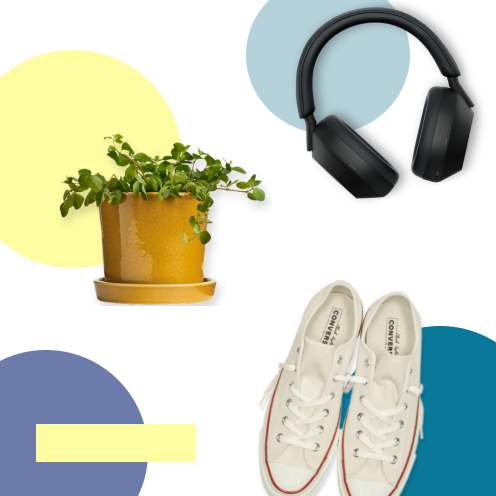
The Independent's journalism is supported by our readers. When you purchase through links on our site, we may earn commission. Why trust us?
13 best educational toys that kids will never get bored of
From science kits to number blocks, there’s something in our guide for every age
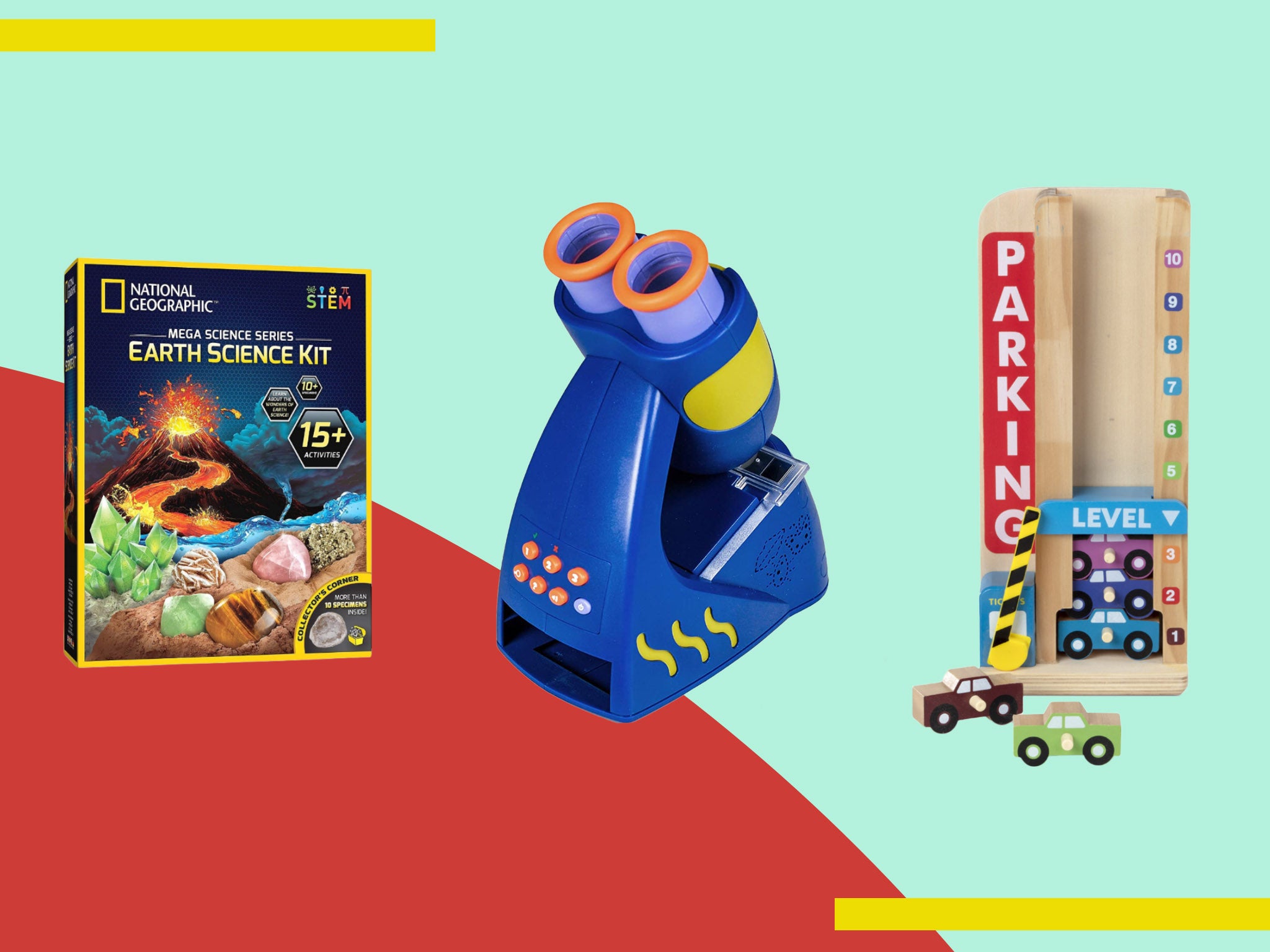
There’s no better way to help your child discover new things, than by learning through play. As far as education goes, play is one of the most important ways in which toddlers, preschoolers and young children develop new skills and gain essential knowledge, providing them with the best start in life.
Although most toys offer some degree of learning or development, the very best educational toys are the ones that engage our kids so much they are too busy having fun to realise they’re learning new things! From cool Stem toys (that’s science, technology, engineering and maths) that will fire-up primary school children’s brains to simpler stacking and sorting toys for toddlers to experiment with, there’s a huge variety of options out there that promise to offer learning mixed with serious play-appeal.
Here, we’ve chosen toys suitable from toddler-age to Year Six, each offering age-appropriate levels of learning. While older children may enjoy sit-down activities and board games or outdoor toys, simple, open-ended toys will probably hold more appeal for the littlest kids.
Toddlers and pre-schoolers in particular, really benefit from toys that can be played in many different ways, giving them the opportunity to lead the play as they learn. One of the great things about open-ended toys is that with so many avenues of play, your child is less likely to get bored and they will grow with your child, making them great value for money.
When testing these toys there were certain factors we paid close attention to: how engaged the children were when playing, the type of learning the toy provided, how much fun the children had and whether it was something they returned to again and again. The very best toys – the ones that have made the round-up – got the thumbs up on every point.
Read more:
You can trust our independent reviews. We may earn commission from some of the retailers, but we never allow this to influence selections, which are formed from real-world testing and expert advice. This revenue helps us to fund journalism across The Independent.
Toniebox starter set

This child-friendly audio player is quite honestly the stuff of dreams for parents. Intuitively designed with no fussy buttons or controls to grapple with, it’s straight-forward enough for even pre-schoolers to operate themselves. All you have to do is place one of the Tonies – a little hand-painted figure containing an audio story – on top of the box and the story starts playing. The Toniebox has serious kid-appeal and was greeted with a big “wow!” when we unboxed it. This clever audio system manages to be soft enough to not feel out of place in a little child’s bedroom, but sturdy enough to deal with over-enthusiastic operators.
The starter set comes with a Toniebox (there’s a range of colours you can pick from), a Creative-Tonie (a blank Tonie with 90 minutes of space for you to upload online audiobooks, music or record your own stories, songs and messages), a charging station and clear instructions on how to set your box up. It’s worth bearing in mind you will need wifi to set it all up. There is an impressive collection of Tonies to choose from, including film favourites like Finding Nemo, Despicable Me and Disney’s Aladdin, classic children’s tales and much-loved stories by Julia Donaldson. There’s also a great choice of more obviously educational Tonies, such as the How and Why: Space Travel/ The Moon and The Age of Dinosaurs/Prehistoric Animals, which offer engaging, age-appropriate narration that absolutely absorbed our testers. The Toniebox gets full marks from us for offering accessible, screen-free learning. It looks great, is easy for children to operate independently and is portable enough to take with you when travelling.
National Geographic explorer earth science kit
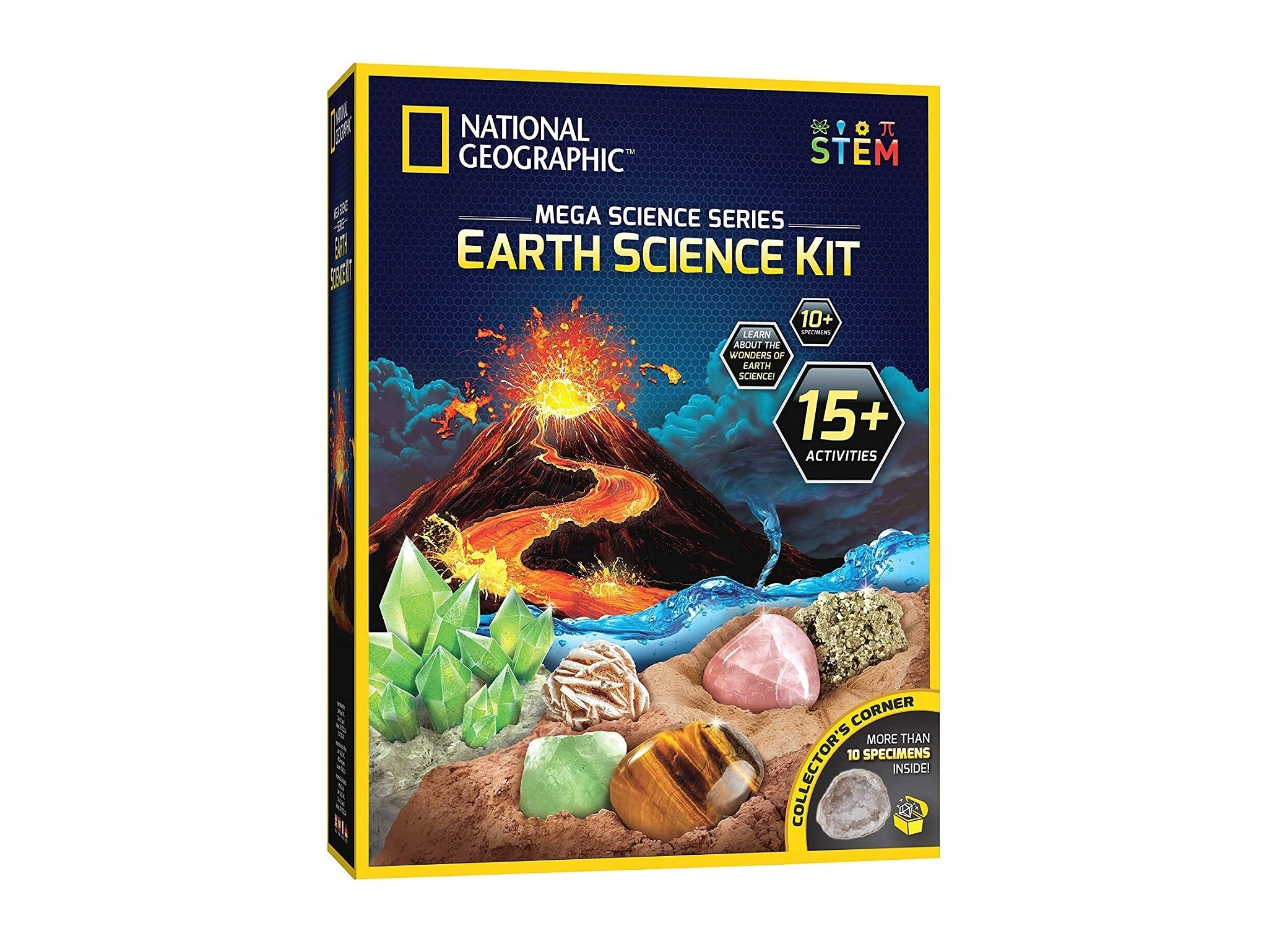
Hands-on Stem learning doesn’t come much better than this kit from National Geographic. Inside the box you have everything you need to conduct five different experiments – even the stirring spatulas are included, you just need to dig a plastic bottle out of recycling to make your volcano. The pack also includes a learning guide, to help understand the science behind all of these things. There’s a great range of experiments to get stuck into including a mix to grow your own crystal – perfect for impatient kids as it only takes a few days to become fully grown. You can also create a water vortex with the tornado tube, dig your own mineral specimen from a fake gold bar and – without a doubt the biggest hit with our testers – create your own erupting volcano. Obviously, if your child is interested in science this kit is perfect, but we found the experiments fun enough to inspire even the most reluctant little scientist. The step by step instructions were helpful, but we felt it would have been handy to have a list of what was needed for each experiment at the start and we think we spotted a measurement typo in the step-by-step for growing the crystal (it states just over one cup as 30ml, but we think it should be 300ml). Although the kit is intended for ages eight and up, as each experiment requires adult supervision, we found that our younger testers, at four-years-old, were particularly amazed by it all. And the grown ups too, to be honest!
The Den Kit Company the original den kit
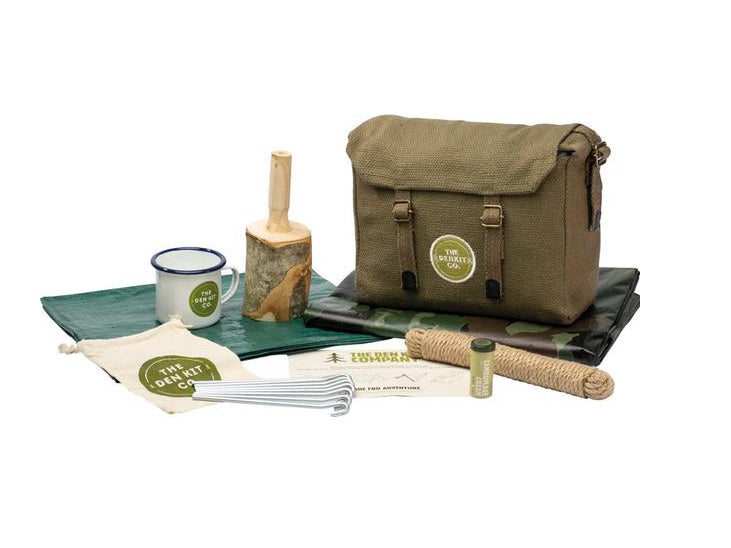
Outdoor learning has seen a huge boom in popularity over recent years, something The Den Kit Company has tapped into perfectly with the original den kit. Inside the green haversack is everything you need to make a pretty epic outside den. There’s a camo tarpaulin to use as the tent cover, a waterproof groundsheet, tent pegs in their own cotton drawstring bag, 10m of natural rope and a unique wooden mallet, handmade from coppiced wood. Trust us when we say, it really is the business. As well as all the essentials, the pack comes with some fun and thoughtful extras, which we thought were excellent touches: an old school enamelware mug (perfect for hot chocolate around the campfire, of course) and camouflage face paint, which elicited cries of “cool!” from our younger testers. For the less outdoorsy among us, there’s a sheet with den building inspiration and a guide to common knots to help you get started.
Smartmax my first sounds and senses
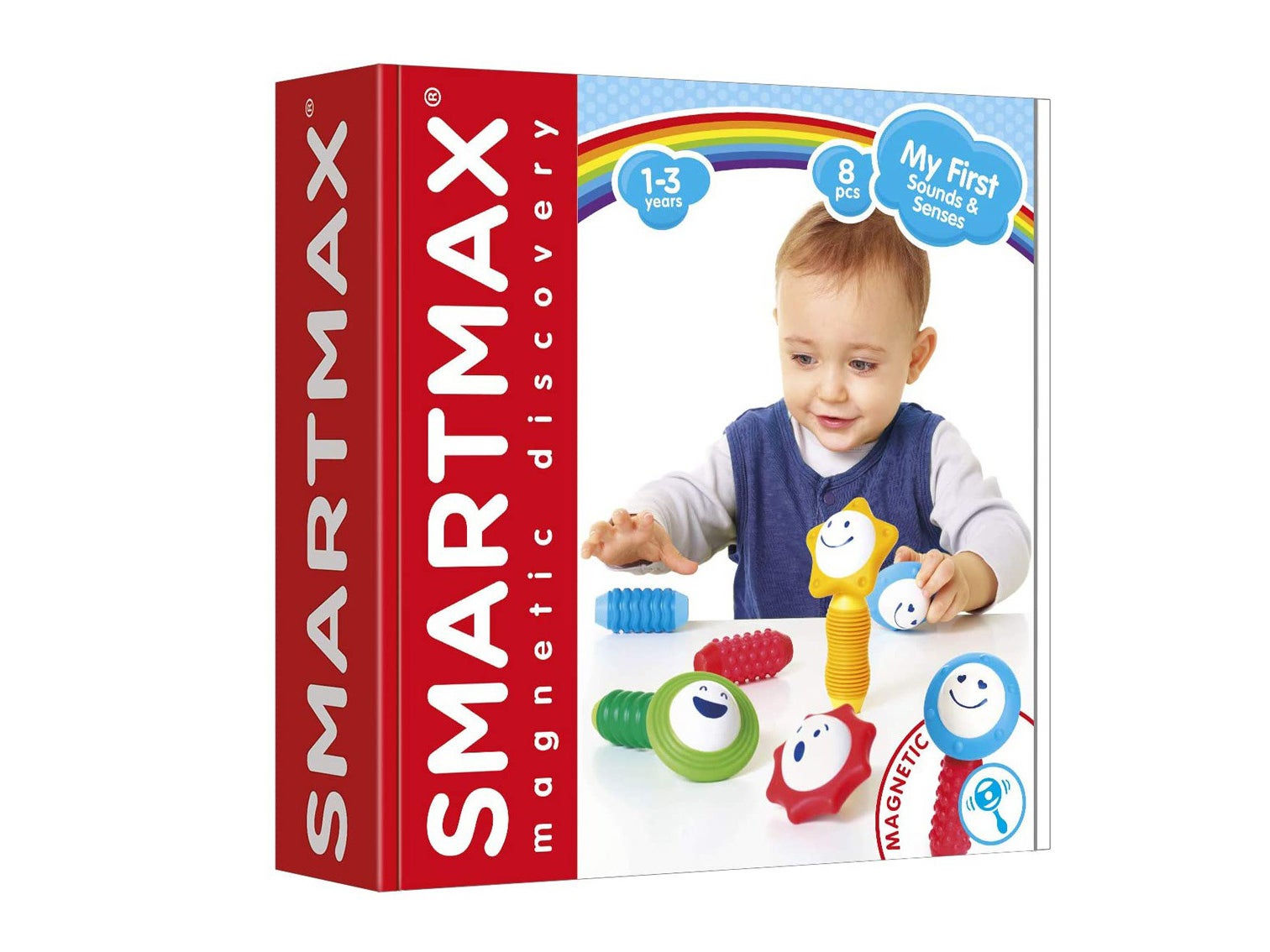
Perfectly built for little hands, this mix and match, eight piece magnetic toy set is a great early learning aid for toddlers and up. The pack includes four magnetic posts, in different primary colours, all with different textured grips: nobbly, ridged, swirly and wavy. There are also four magnetic balls, featuring faces with different expressions, which make different sounds when shaken. We found the tactile set was a fantastic way of helping little ones learn through sensory play, as they discovered the different textures and sounds, learnt the names of colours and recognised all kinds of emotions from the expressions on the balls. Our 18-month-old tester was engrossed just exploring the different bars, fixing on the balls and giving them a good rattle, but we think there’s plenty to help little ones learn and hold their interest for a good couple of years.
Stomp rocket junior glow
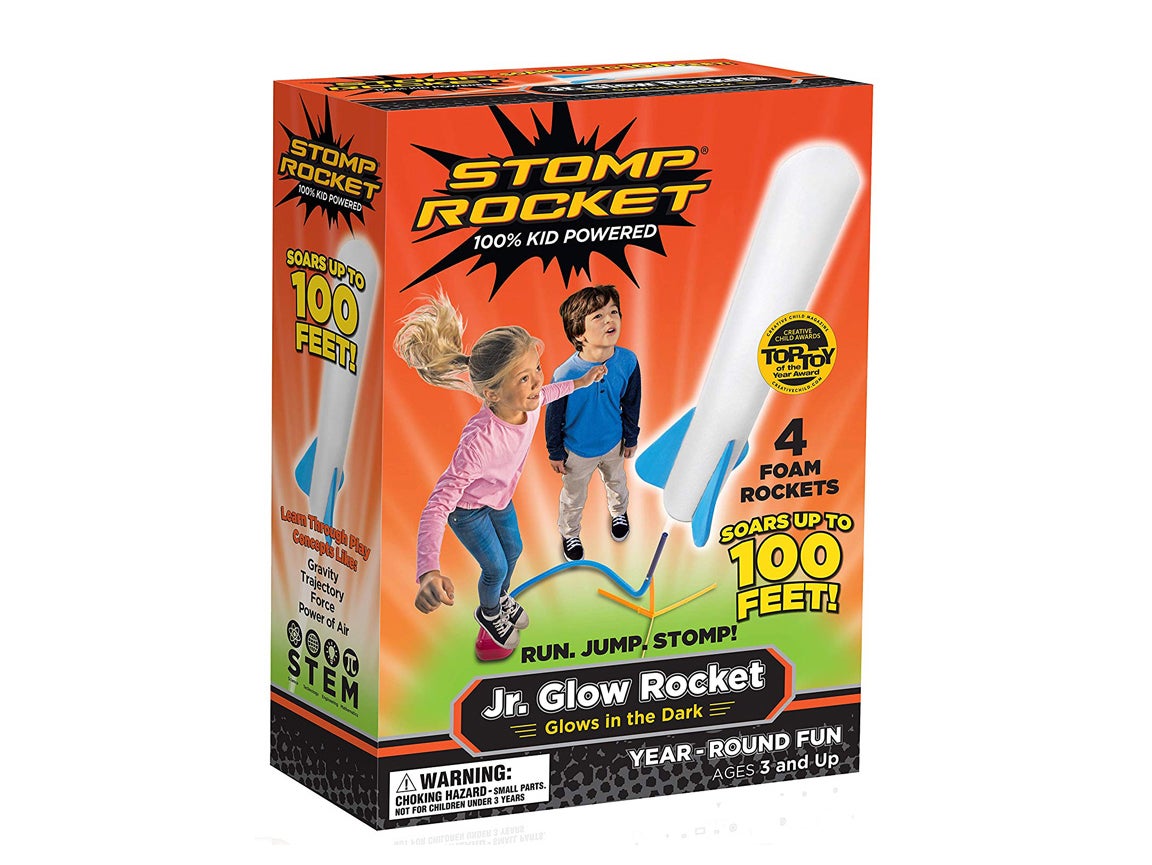
A guaranteed crowd pleaser, the Stomp Rocket may look simple, but it’s one of the best outdoor toys we’ve played with. Just push one of the hollowed-out, foam tipped rockets onto the launch stand and jump on the launch pad to watch it go shooting up into the air. Make no mistake, with enough kid-power behind it, these rockets can go at some serious speed and distance— up to 100 feet in fact. Introducing the theory of gravity, force and the power of air, Stem learning has never been so much fun, plus, kids will soon get to grips with the idea of trajectory after losing one or two rockets over the garden fence (you can order extra packs of foam rockets separately and we’d suggest you do). The base is straight forward and very quick to assemble, just connect the air hose to the stand, and you’re good to go. Although the foam rockets are glow in the dark, it’s definitely more of a dull glow than super bright, so we’d recommend this more for daytime play. That being said, we were seriously impressed with this toy and our testers were queuing up to be the next one to jump on the blast pad and send a rocket zooming into the sky.
Brainstorm 2-in-1 earth and constellations globe
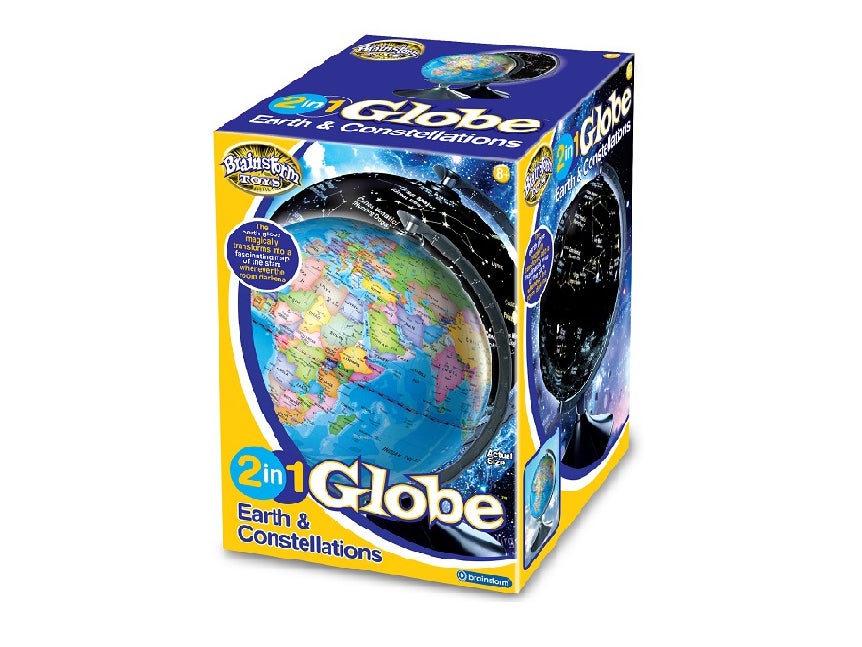
So much more than just your standard globe, this two-in-one offering from Brainstorm is an accessible way to encouraging a fascination with geography and astronomy. By day, it’s a lightweight, decent sized globe (just under 23cm in diameter) with all the typical features you’d expect, but it’s at night where it really wowed us. With the globe turned on, the light sensor detects when the room is dark enough to switch to night mode and the globe transforms into a glowing map of the night sky, showing all the star constellations (complete with Latin and common names) in place of countries. No assembly is required, but the globe either needs batteries or to be plugged into the mains with a mini USB cable (neither of these are included) to be able to work. We like how the globe can also be used as a night light, a real hit with our younger testers, who have never been so excited for bedtime before. For under £40, we think it’s a fun addition to any child’s bedroom or playroom, and certainly one that will stand the test of time.
Dena rainbow 6pc play set

Made from BPA free, bacteria resistant platinum silicone, this neon six-piece rainbow playset is the perfect example of an open ended toy. We really rate the cool, minimalist design; it’s the kind of toy you want out on display in your kid’s room rather than hidden out of sight like some of the more garish plastic offerings little one’s can’t get enough of. Despite the simple design, the possibilities for learning are vast toddlers and preschoolers can learn colours and counting as they stack, as well as the idea of “under”, “over”, “on” and “around” as the arches are used to create different kind of constructions. We found that our older tester, at four-years-old, was equally drawn to the playset, but instead used it to create ramps, bridges and tunnels for their cars. The set has a few more tricks up its sleeve too, being dishwasher, freezer and over safe, you can use it as part of a baking session with kids, as well as working as a teether for babies.
Orchard Toys magic spelling
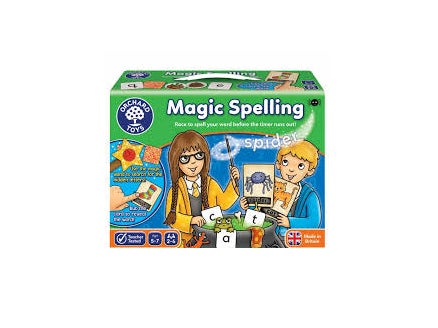
Orchard Toys have got it covered when it comes to teacher-tested and approved educational board games for kids, and it’s the magic spelling game that came out as a clear favourite with our young testers. Suitable for ages five to seven, that’s KS1, the aim is to help boost language and literacy skills, and we found it the perfect balance between fun and learning. Each player chooses a picture card and then has a race against the timer to find the letters to spell that word. All the letter cards are face down, but you use the genius “magic wand” to reveal the letters on the card as you go. Once you’ve collected all the letters you need you can check if you’re right by rubbing the card to magically reveal the word, then choose an ingredient token to add to your spell book, the first player to fill theirs out wins. A little adult help was needed to pop all of the pieces out from cardboard sheets and assemble the spinner, but apart from that it’s a game children can play independently with two to four players. We’ve found this is a game our testers, both Reception and Year One age, have reached for time and again, and it’s helped to boost their confidence when sounding out words and spelling. A firm family favourite.
Learning Resources coding critters ranger & zip
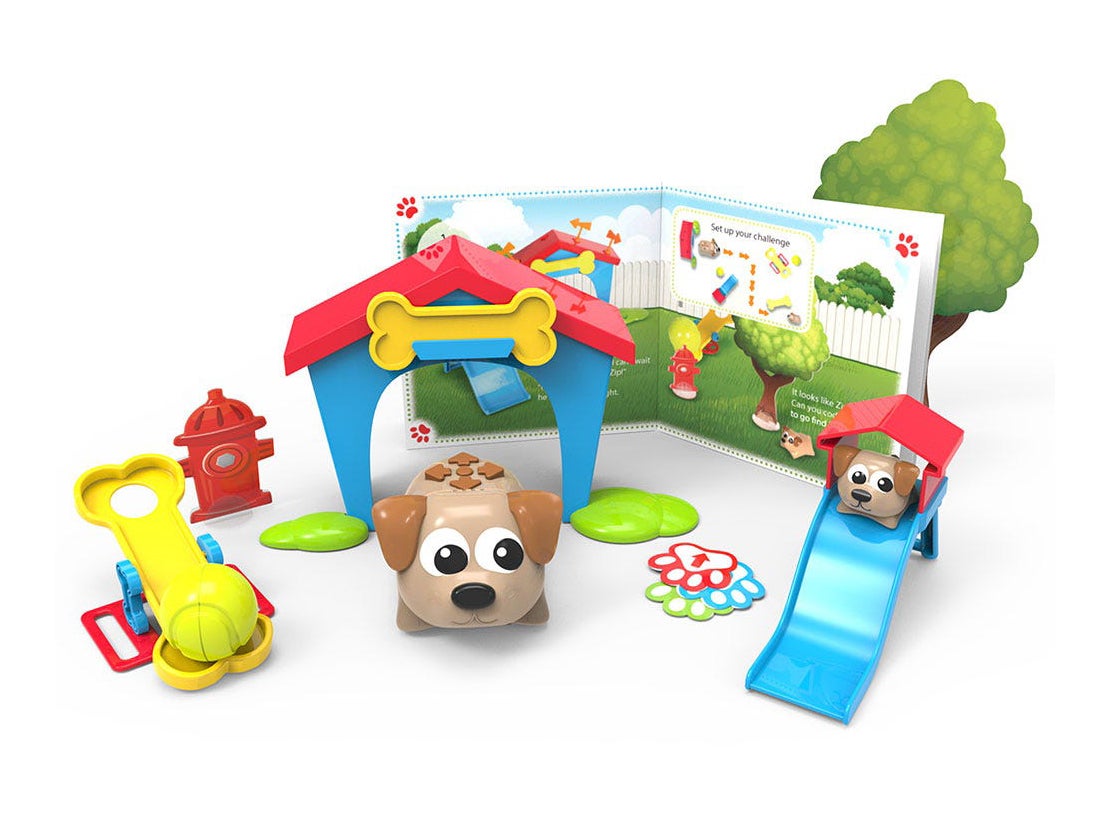
Coding critters certainly bring the cute factor to the world of programming. Ranger is an interactive dog that helps introduce children from four and up to Stem concepts of basic coding. In “code mode” you can input a coding sequence of up to 30 moves, using the arrows on the dog’s back to track a path forward, backwards and left and right. When Ranger is in “play mode” you use the arrows to feed and pet your dog, or watch as it dances, barks and interacts with Zip, the little puppy that comes in the pack. There are various props that are included, like a seesaw to help throw the ball which you then program Ranger to fetch, a house, slide and cardboard decorations. We love the idea behind the toy and were very impressed by how easy it was to use, all it took was a quick explanation to our young tester about how it all worked, and they were off. There is a storybook included, which features a set of coding challenges, but our tester wasn’t particularly interested. Despite that, quite quickly random button pressing soon gave way to more thought out coding, with our tester creating obstacles for Ranger to move around and trying to reach certain destination point through programming.
Geosafari Jr. talking microscope
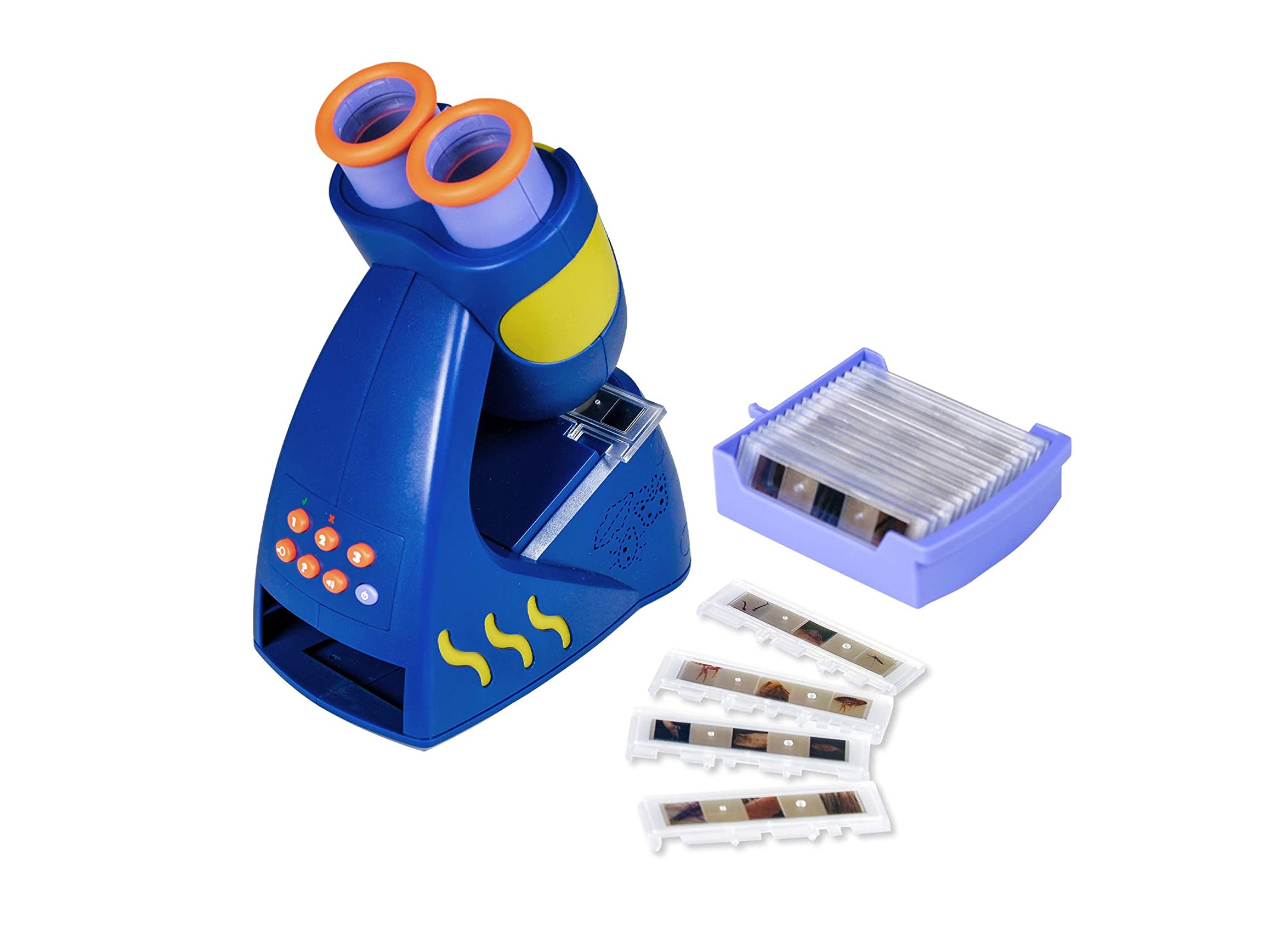
What struck us first was how sturdy and kid proof this microscope is, a pretty important consideration when you’re spending almost £40 on a toy. Not your typical microscope, this interactive model comes with 20 slides, each with three images on the same theme – featuring everything from dandelions to mosquitos. When a slide is clicked into place, a recording by Bindi Irwin (conservationist and daughter of Steve Irwin) will play, explaining everything you are seeing. The microscope itself is colourful, with soft, kid-friendly eyepieces offering five times magnification, it requires no set up but you will need three AAA batteries, which aren’t included. There’s a little drawer hidden in the bottom of the microscope where you can store all the slides and we found this easy enough for little hands to open and close with no bother. In fact, we found the whole design was perfect for preschoolers and early years, with our testers having no problem selecting the slides they wanted and clicking them into place after a couple of tries. Aimed at children three-years-old and over, we feel this is definitely more suited to younger children, as the limited number of slides mean older kids could lose interest relatively quickly – it would be amazing if you could buy additional slides, hopefully, it’s something Geosafari will consider at some point. However, we feel there is scope to grow with the kit as, as well as the fact button, which plays Irwin’s commentary, there is also a quiz option to test you on your knowledge. For our four-year-old tester, who keeps piping up with some very excellent facts picked up from the slides, the novelty has definitely not worn off and we can’t see that happening any time soon.
Melissa & Doug stack & count parking garage
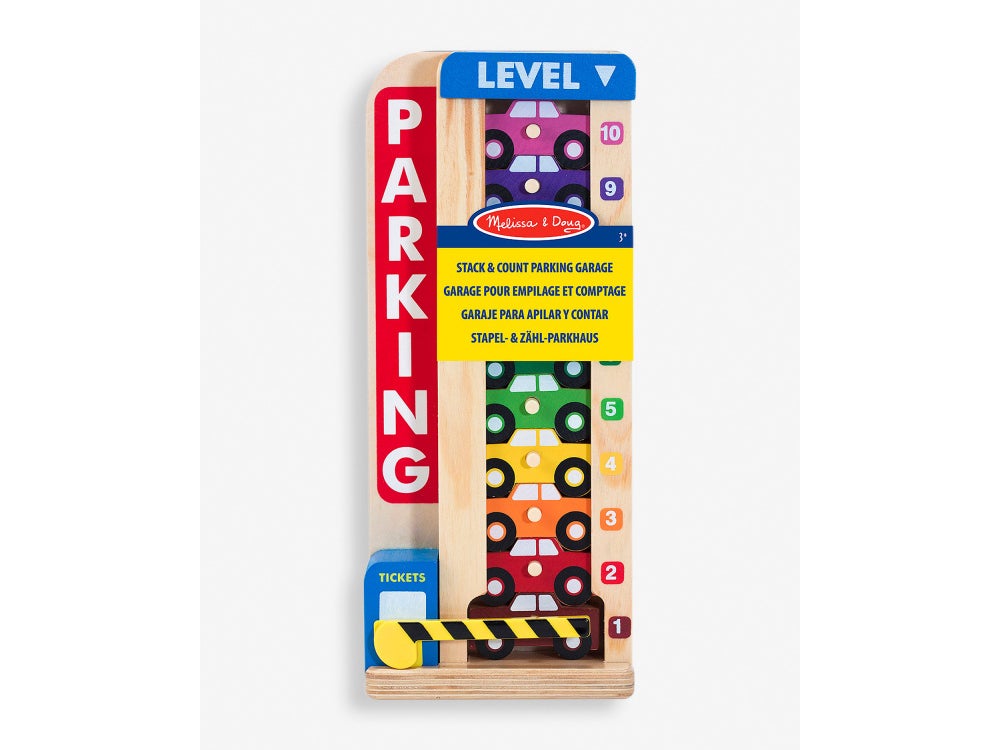
The idea behind this cute, retro looking wooden toy is that you stack the ten cars into the car park, then slide them out of the bottom, one by one, as the counter moves down to show how many cars are left. It’s a simple way to help with early number skills, as well as sorting and matching the right colour car to the correct number. The suggested age for this toy is three years and above, but our toddler tester really enjoyed playing with this, slotting the cars in at the top and watching them fall down into place, and lifting up each car to tell us the colour. It’s a beautifully designed toy that also helps with fine motor skills, as well as sparking some imaginative play with our older testers. A great all rounder at an affordable price.
Numberblocks mathlink cubes
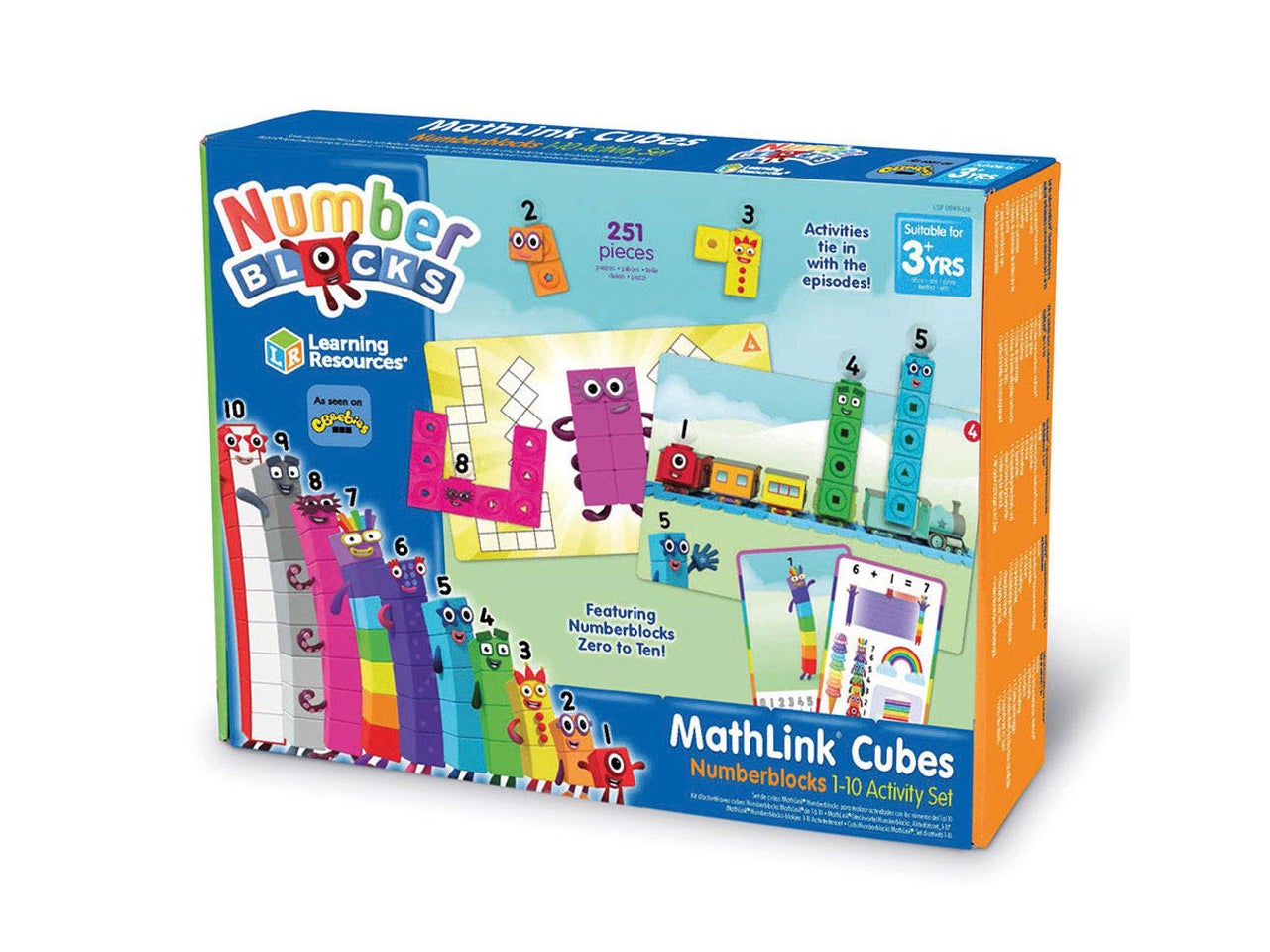
A great educational toy, especially for Numberblocks fans, this activity set includes everything your child needs to build their own characters from the hit CBeebies show. Essentially, what you’re getting is enough building cubes, which are a popular learning aid in the classroom, stickers and flat square coverings, to create all the Numberblocks from one to 10. It takes a little time to stick all the stickers on correctly (young children could benefit from some adult help with this) but once that’s done the kit is ready to use.
Inside the pack are character cards for each Numberblock, and various wipe clean activity cards, all of which link up with episodes from the TV show. You can watch the episodes as you learn, but our testers preferred to just get stuck in. There are 30 different activities in the pack, to help children with counting, adding, subtracting, division and multiplication, and we found it a fantastic resource during lockdown home schooling. The best thing about the activity set is the number of ways in which you can use it. Our Reception age tester enjoyed simply making up their own Numberblocks and creating their own games using the different characters, all the while working on their numeracy skills without even realising it, a definite win/win!
Magna-Tiles clear colours 32pc Set
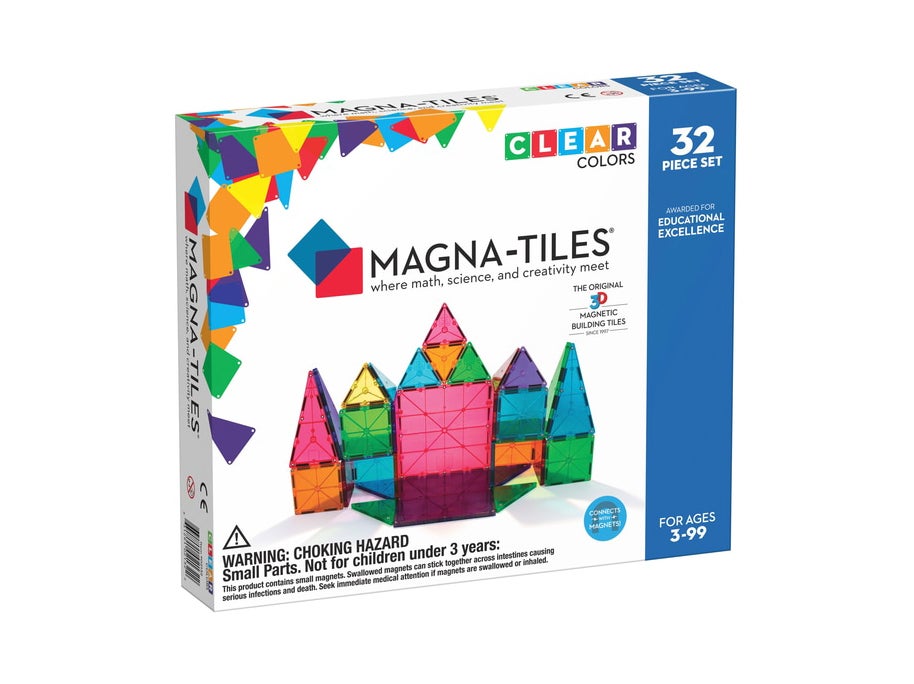
Magna-Tiles, magnetic shapes that click together to create all manner of constructions, offer a more flexible and creative approach to building than traditional blocks. This 32-piece set comes with a variety of different size triangles and squares, in rainbow shades, that you can use to create pretty much anything you want while learning about shapes, colours and building skills. The brand is not wrong when it says Magna-Tiles are suitable “for ages three to 99”, as these simple building tiles hooked our little testers, big testers and grown up testers too!
They are a great choice for encouraging free play and independent learning around Stem concepts, away from any screens. While our youngest tester enjoyed creating flat designs on the floor using the shapes, there was no stopping our school-age testers as far as imagination was concerned. Boats, cities, rockets, castles and lorries were all knocked up without following any instructions or visual guides. Without a doubt, this is the toy our testers came back to over and over again.
The verdict: Educational toys
Toniebox stood out for us – it’s a fantastic piece of kit that offers so much potential for independent learning, as well as having that all important kid-appeal. For a more hands-on toy, Magna-Tiles hugely impressed thanks to its versatility, while the original den kit provides all you need for some incredible outdoor learning.
For more educational toys to keep them occupied, read our 10 best Stem toys to help kids to learn while they play
